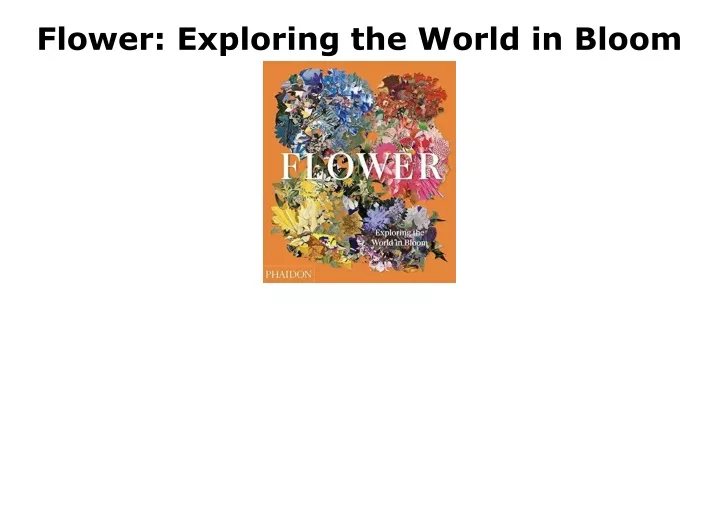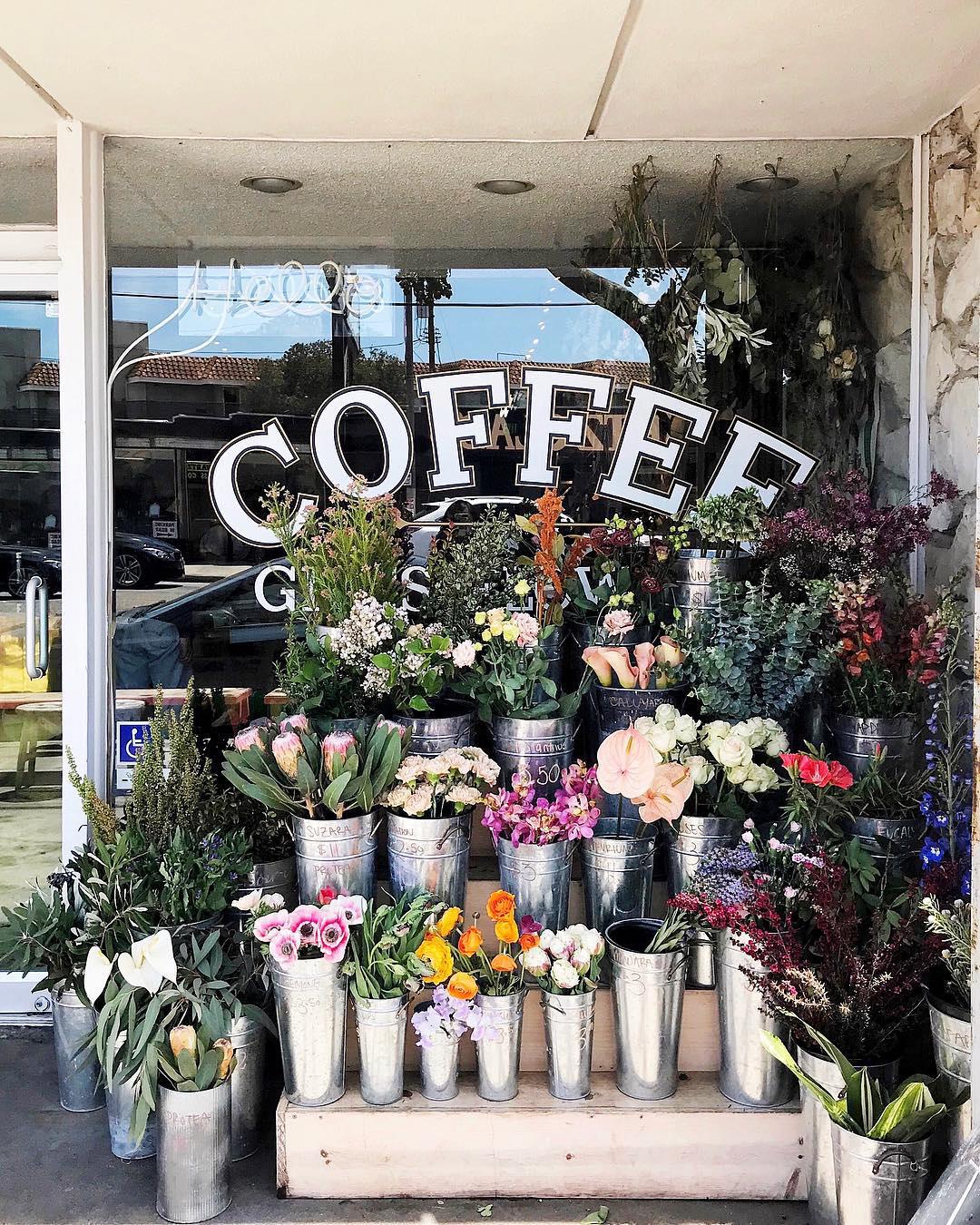A Blooming Business: Exploring the World of Flower Nurseries
Flower nurseries, often vibrant and fragrant havens, are more than just places to buy plants. They are integral to the horticultural landscape, playing a crucial role in propagation, cultivation, and distribution of flowering plants that brighten our homes, gardens, and communities. From sprawling commercial operations to small, family-run enterprises, flower nurseries are a testament to the enduring human connection with nature and a thriving sector of the agricultural industry.
The Heart of the Operation: Propagation and Cultivation
At its core, a flower nursery is a dedicated space for the propagation and cultivation of flowering plants. This involves a complex process, often starting with seeds, cuttings, or divisions from existing plants. The specific methods used depend heavily on the species being propagated.
Seed Propagation: This is a common method for many annuals and some perennials. Seeds are sown in carefully prepared soil mixes, often in controlled environments to optimize germination rates. Factors like temperature, humidity, and light are meticulously monitored to ensure healthy seedling development.
Cutting Propagation: This method involves taking sections of stems, leaves, or roots from a parent plant and encouraging them to develop roots of their own. Cuttings are often treated with rooting hormones to accelerate the process and are kept in humid conditions to prevent dehydration.
Division: This technique is used for plants that naturally form clumps or offsets. The plant is carefully divided into smaller sections, each with its own root system and shoots, which are then planted individually.
Grafting: This specialized technique involves joining two plants together, typically a rootstock (the base) and a scion (the top part). Grafting is often used to combine desirable traits, such as disease resistance from the rootstock and beautiful blooms from the scion.


Once propagated, young plants are carefully nurtured in various stages of development. This involves transplanting them into larger containers as they grow, providing appropriate watering, fertilization, and pest and disease control. Nurseries utilize a variety of growing media, ranging from traditional soil mixes to soilless substrates like peat moss, perlite, and vermiculite. The choice of medium depends on the plant species, the desired drainage, and the nutrient retention characteristics.
Beyond the Basics: Specialized Cultivation Techniques
Modern flower nurseries often employ sophisticated techniques to optimize plant growth and produce high-quality blooms. These techniques may include:

Greenhouses: These enclosed structures provide a controlled environment, protecting plants from harsh weather conditions and allowing for year-round cultivation. Greenhouses can be equipped with heating, cooling, ventilation, and irrigation systems to precisely regulate temperature, humidity, and light levels.
Hydroponics: This method involves growing plants without soil, using nutrient-rich water solutions. Hydroponics allows for precise control over nutrient delivery and can result in faster growth rates and higher yields.
Integrated Pest Management (IPM): This approach emphasizes preventative measures and biological controls to minimize the use of chemical pesticides. IPM involves monitoring for pests and diseases, using beneficial insects and other natural predators, and applying targeted treatments only when necessary.
Controlled-Release Fertilizers: These fertilizers release nutrients gradually over time, providing a consistent supply to plants and reducing the risk of over-fertilization.
A Symphony of Colors: The Range of Flowers Offered
Flower nurseries offer a diverse array of flowering plants, catering to a wide range of tastes and preferences. The selection typically includes:
Annuals: These plants complete their life cycle in a single growing season, providing vibrant color for a limited time. Popular annuals include petunias, impatiens, marigolds, and zinnias.
Perennials: These plants live for more than two years, often returning year after year with beautiful blooms. Popular perennials include daylilies, hostas, coneflowers, and lavender.
Bulbs: These plants store food in underground bulbs, corms, or tubers, producing stunning flowers in the spring or summer. Popular bulbs include tulips, daffodils, hyacinths, and lilies.
Flowering Shrubs: These woody plants provide structure and beauty to gardens, with blooms that last for weeks or even months. Popular flowering shrubs include roses, hydrangeas, azaleas, and camellias.
Flowering Trees: These trees offer breathtaking displays of flowers in the spring, adding a touch of elegance to any landscape. Popular flowering trees include dogwoods, magnolias, and cherry blossoms.
The Role of the Flower Nursery in the Community
Flower nurseries play a vital role in the community, providing not only beautiful plants but also valuable services and resources. They often offer:
Expert Advice: Nursery staff are knowledgeable about plant care and can provide guidance on selecting the right plants for specific locations and growing conditions.
Landscaping Services: Some nurseries offer landscaping services, helping customers design and install gardens that are both beautiful and functional.
Educational Workshops: Many nurseries host workshops and seminars on topics such as gardening techniques, plant identification, and pest and disease control.
Community Events: Nurseries often participate in community events, such as farmers’ markets and garden shows, promoting the benefits of gardening and supporting local businesses.
Challenges and Opportunities in the Flower Nursery Industry
The flower nursery industry faces several challenges, including:
Competition from Big Box Stores: Large retailers often sell plants at lower prices, putting pressure on smaller nurseries to compete.
Changing Consumer Preferences: Consumers are increasingly interested in sustainable gardening practices and eco-friendly products.
Climate Change: Extreme weather events, such as droughts and floods, can impact plant production and increase operating costs.
Labor Shortages: Finding and retaining qualified workers can be a challenge, particularly during peak seasons.
Despite these challenges, the flower nursery industry also has many opportunities for growth and innovation. These include:
Focusing on Niche Markets: Nurseries can differentiate themselves by specializing in particular types of plants, such as native species, organic varieties, or rare cultivars.
Embracing Technology: Nurseries can use technology to improve efficiency, such as automated irrigation systems, online ordering platforms, and social media marketing.
Promoting Sustainable Practices: Nurseries can attract environmentally conscious consumers by adopting sustainable growing practices, such as using recycled materials, conserving water, and reducing pesticide use.
Building Strong Customer Relationships: Nurseries can build loyalty by providing excellent customer service, offering personalized advice, and creating a welcoming atmosphere.
The Future of Flower Nurseries
The flower nursery industry is poised for continued growth and innovation in the years to come. As consumers become increasingly interested in creating beautiful and sustainable landscapes, flower nurseries will play an increasingly important role in providing the plants, knowledge, and services they need to succeed. By embracing new technologies, promoting sustainable practices, and building strong customer relationships, flower nurseries can ensure a bright and blooming future.
Frequently Asked Questions (FAQ) about Flower Nurseries
Q: What is the difference between a flower nursery and a garden center?
A: While the terms are often used interchangeably, there are subtle differences. A flower nursery primarily focuses on propagating and growing plants, often specializing in a particular type or variety. A garden center typically offers a broader range of products, including plants, gardening tools, fertilizers, and other related items. Garden centers often purchase their plants from nurseries.
Q: What should I look for when buying plants from a flower nursery?
A: Look for plants that are healthy, vigorous, and free from pests and diseases. Check the leaves for signs of discoloration, spots, or insect damage. Examine the roots to ensure they are well-developed and not pot-bound. Also, consider the plant’s overall shape and structure to ensure it is symmetrical and well-proportioned.
Q: How do I know which plants are right for my garden?
A: Consider your local climate, soil conditions, and sunlight exposure. Research the specific needs of each plant you are interested in, including its water requirements, fertilization needs, and potential size at maturity. Consult with nursery staff for advice on selecting the right plants for your garden.
Q: What are some tips for planting and caring for new plants?
A: Choose a planting location that meets the plant’s specific needs. Dig a hole that is twice as wide and as deep as the plant’s root ball. Amend the soil with compost or other organic matter to improve drainage and fertility. Water thoroughly after planting and continue to water regularly until the plant is established. Fertilize as needed, following the instructions on the fertilizer label.
Q: How can I prevent pests and diseases in my garden?
A: Choose disease-resistant varieties of plants. Maintain healthy soil and provide adequate water and nutrients. Monitor your plants regularly for signs of pests and diseases. Use organic pest control methods whenever possible, such as beneficial insects and horticultural oils.
Q: What are some sustainable gardening practices I can use?
A: Use compost to improve soil fertility and reduce the need for synthetic fertilizers. Conserve water by using drip irrigation and mulching around plants. Choose native plants that are adapted to your local climate and require less water and maintenance. Reduce pesticide use by using organic pest control methods and encouraging beneficial insects.
Q: Can I return plants to the nursery if they die?
A: Many nurseries offer a warranty on their plants, allowing you to return them for a refund or exchange if they die within a certain period. Check the nursery’s return policy before purchasing plants. However, remember that warranties often don’t cover issues related to improper planting or care.
Q: How can I support local flower nurseries?
A: Shop at local nurseries instead of big box stores. Attend nursery events and workshops. Spread the word about your favorite nurseries to friends and family. Leave positive reviews online.
Conclusion: A Blossoming Future for Flower Nurseries
Flower nurseries are more than just businesses; they are vital contributors to the beauty, health, and sustainability of our communities. From propagating and cultivating a diverse range of flowering plants to providing expert advice and fostering a love of gardening, these businesses play a crucial role in connecting people with nature. While the industry faces challenges, it also possesses significant opportunities for growth and innovation. By embracing sustainable practices, leveraging technology, and building strong customer relationships, flower nurseries can continue to thrive and contribute to a more vibrant and flourishing world. Supporting local flower nurseries is an investment in our communities and a celebration of the beauty and wonder of the natural world. So, the next time you’re looking to add a touch of color to your home or garden, consider visiting your local flower nursery and experience the joy of bringing nature into your life.


